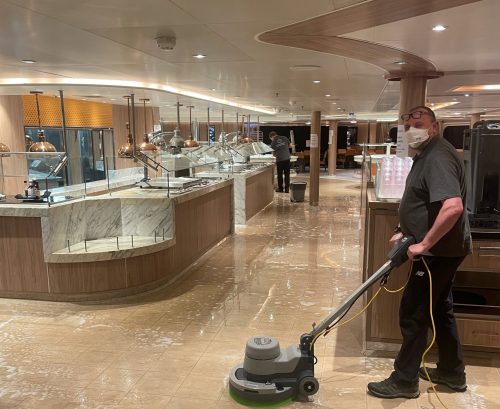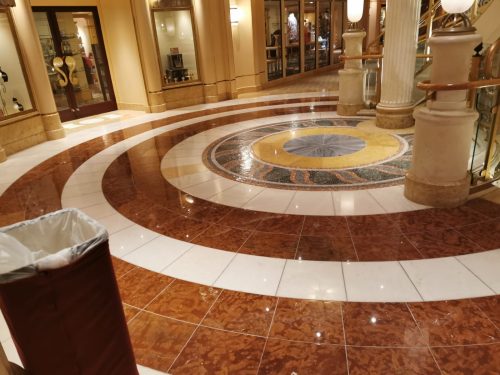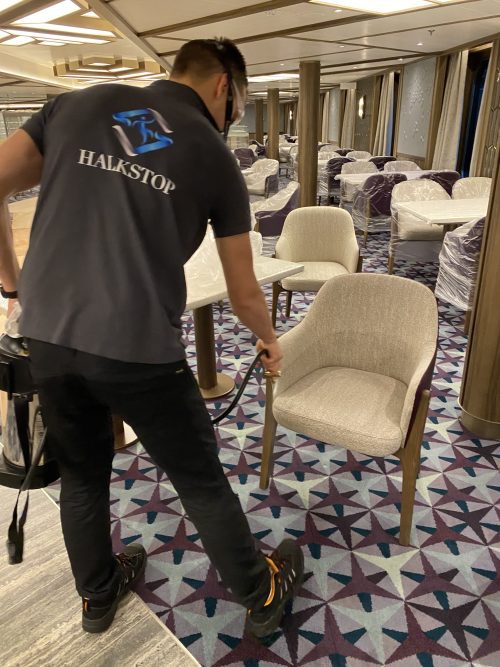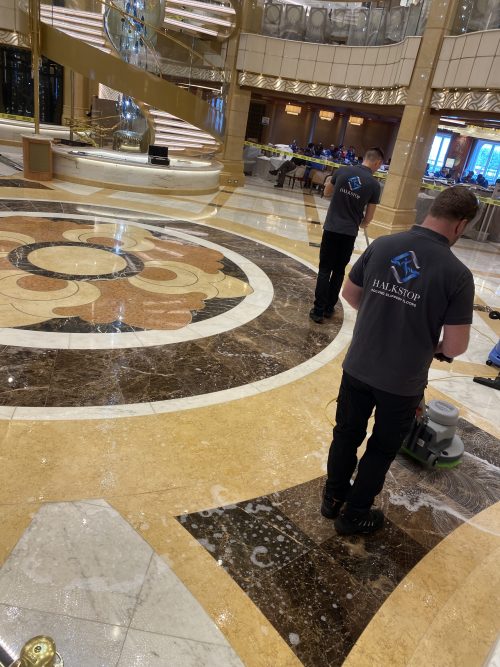HALKSTOP Anti-Slip Treatment For the cruise industry, spas, hotels & restaurants, and swimming pools.
5-year warranty on all our treatments. Our floor treatments are of the highest quality because we do not use subcontractors, only our own certified anti-slip technicians
What we do – We are industry leaders in floor safety and slip resistance.
FOR OVER 24 YEARS, WE HAVE SOLVED SLIPPERY FLOOR PROBLEMS FOR CUSTOMERS AROUND THE WORLD
We have collaborated with managers, facility directors, architects, and security personnel to minimize slip accidents caused by slippery and wet surfaces on cruise ships, hotels, spas, and swimming pools. We are industry leaders in floor safety and anti-slip solutions.
In 2019, we opened our office in Sweden, and in 2022, we opened the office in the U.K.
HALKSTOP Anti-Slip Treatment
HALKSTOP anti-slip treatments are not a film or wax and will not peel off. Through a complex chemical reaction, the HALKSTOP treatment creates a microstructure on the surface, making floors slip-resistant even when exposed to wet conditions.
All our floors undergo friction testing before and after treatment using a Tracscan 2.0, including static and dynamic tests in wet conditions.
The industries we work with include:
Cruise Ships
One of the biggest risks for workers in the maritime industry is slip accidents. Ships have surfaces that can become slippery when wet, and the continuous movement of ships can make already slippery surfaces even more dangerous.
Restaurants
As a restaurant owner, you invest significantly in the building, interior design, furniture, food quality, and the maintenance of the environment. Regardless of how beautiful and stunning your restaurant is, a slippery floor can seriously impact the impression of your establishment.
Swimming Pools
In swimming pool areas where water is constantly present on the floors, HALKSTOP anti-slip treatment provides your members with the confidence to navigate pools, showers, and poolside areas with ease. Water accumulation and hazardous slippery floors can pose risks to many of the customers visiting these locations.
Spas
Consider this: salon and spa environments are perfect settings for slip and fall accidents. There’s constant foot traffic in and out of these facilities, and floors can be wet or covered in hair clippings. Staff tries to keep up with sweeping and mopping, but it can be challenging when it’s crowded—especially on a rainy or snowy day.
News!
We are delighted to announce that HALKSTOP UK has opened an office in the United Kingdom. With a growing demand for our services and products, our office officially launched in the spring of 2023.
John Burditt, who serves as the Managing Director, brings over 15 years of experience in sales and operations from his previous roles. In addition to cruise ships, he has worked on numerous prestigious projects such as The Savoy, The Shard, Burberry, and more.







